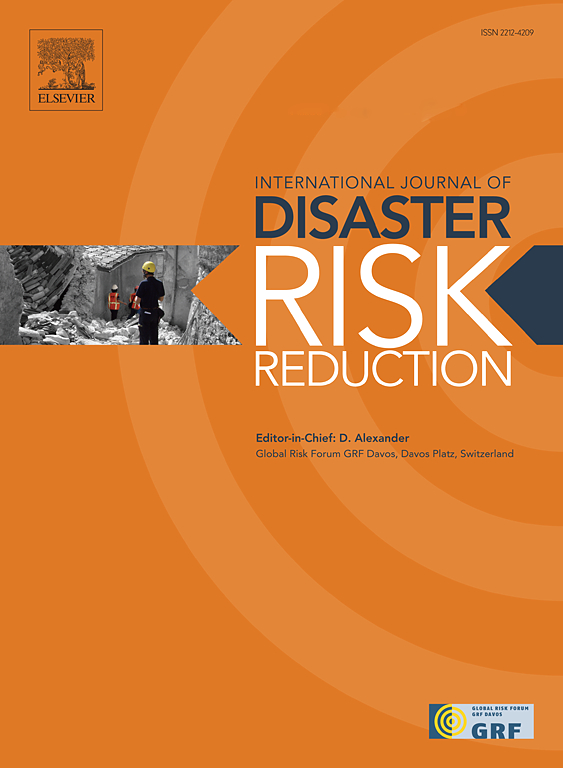Assessing safety in buildings and of evacuees considering fire impacts
IF 4.2
1区 地球科学
Q1 GEOSCIENCES, MULTIDISCIPLINARY
International journal of disaster risk reduction
Pub Date : 2025-01-29
DOI:10.1016/j.ijdrr.2025.105259
引用次数: 0
Abstract
This study creates a fire evacuation simulator considering fire impacts on safety in buildings and of evacuees. Fire dynamics simulation, navigation graph generation, fuzzy logic system, and agent-based simulation are integrated to capture the interactions of fire, building, and evacuees. Indices are proposed to evaluate the safety in all parts of buildings and of evacuees. A fuzzy logic system is built to model exit selection of evacuees concerning fire dynamics. The contributions include: (1) introducing the edge capability deterioration index (ECDI) and path capability deterioration index (PCDI) to evaluate fire impacts on the safety of edges and paths, respectively; (2) presenting a capability (c) index to quantify the fire-affected safety of evacuees; and (3) developing a fuzzy logic system to model exit selection of evacuees. A three-storey building, accommodating a population of 615 individuals, is examined as a case across nine scenarios. The findings include relocating the fire from a non-critical compartment to near an exit decreases the final total c by 3.4% and increases evacuation time by 13.8%. This relocation raises the maximum ECDI at 400 s by 21.1%. They also demonstrate that the shortest path is not always the safest, as illustrated by a specific location at a particular time, in which the safest path takes 83.3% longer but has a PCDI 18.2% lower than the shortest time path. The findings signify the capability of the developed indices in assessing the safety in buildings and of evacuees spatiotemporally.
求助全文
约1分钟内获得全文
求助全文
来源期刊

International journal of disaster risk reduction
GEOSCIENCES, MULTIDISCIPLINARYMETEOROLOGY-METEOROLOGY & ATMOSPHERIC SCIENCES
CiteScore
8.70
自引率
18.00%
发文量
688
审稿时长
79 days
期刊介绍:
The International Journal of Disaster Risk Reduction (IJDRR) is the journal for researchers, policymakers and practitioners across diverse disciplines: earth sciences and their implications; environmental sciences; engineering; urban studies; geography; and the social sciences. IJDRR publishes fundamental and applied research, critical reviews, policy papers and case studies with a particular focus on multi-disciplinary research that aims to reduce the impact of natural, technological, social and intentional disasters. IJDRR stimulates exchange of ideas and knowledge transfer on disaster research, mitigation, adaptation, prevention and risk reduction at all geographical scales: local, national and international.
Key topics:-
-multifaceted disaster and cascading disasters
-the development of disaster risk reduction strategies and techniques
-discussion and development of effective warning and educational systems for risk management at all levels
-disasters associated with climate change
-vulnerability analysis and vulnerability trends
-emerging risks
-resilience against disasters.
The journal particularly encourages papers that approach risk from a multi-disciplinary perspective.
 求助内容:
求助内容: 应助结果提醒方式:
应助结果提醒方式:


